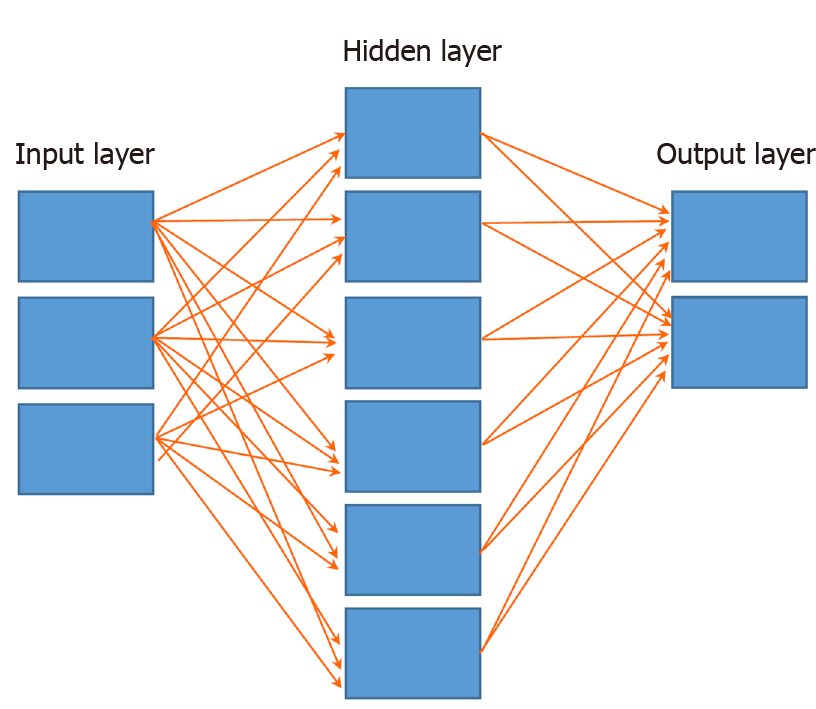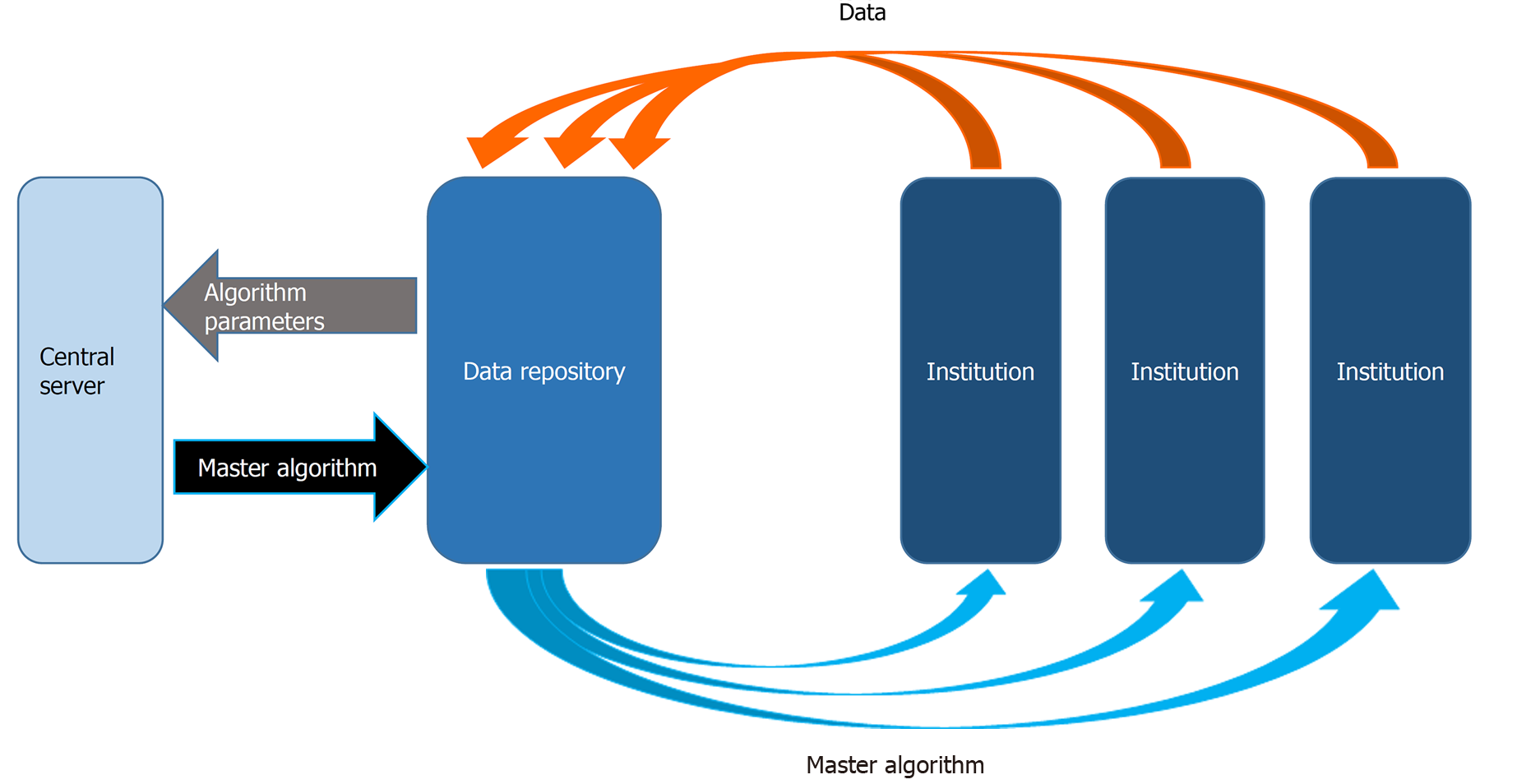Copyright
©The Author(s) 2021.
World J Gastroenterol. Apr 7, 2021; 27(13): 1283-1295
Published online Apr 7, 2021. doi: 10.3748/wjg.v27.i13.1283
Published online Apr 7, 2021. doi: 10.3748/wjg.v27.i13.1283
Figure 1 Basic anatomy of an artificial neural network.
Input layer, hidden layer (may have more than one) and output layer. All nodes are interconnected through wieghts (arrows).
Figure 2 Centralized artificial intelligence information sharing system.
Each individual institution provides data to the central server. The server analyzes all the data and develops and algorithm that is sent to each institution. This algorithm is then used by each institution to analyze its own internal data in the future.
Figure 3 Federated artificial intelligence information sharing system.
Each individual institution develops its own algorithm with internal data. Once the algorihms are developed, their parameters are shared with the central server. The server then develops a master algorithm using all the individual parameters. The master algorighm is sent back to the institutions for its internal use.
Figure 4 Hybrid artificial intelligence infromation sharing system.
A data repository is created as an intermediary between the institutions and the central server. The data repository develops one or more algorithm(s) with the data. The parameters of these algorithms are then shared with the central server to create a master algorithm which is then returned to the repository. New data coming from the institutions is then used by the repository to create new parameters that are then sent to the central server to renew the master algorithm.
Figure 5 Collaboration to expedite broad artificial intelligence application in medicine.
AI: Artificial intelligence.
- Citation: Mendoza Ladd A, Diehl DL. Artificial intelligence for early detection of pancreatic adenocarcinoma: The future is promising. World J Gastroenterol 2021; 27(13): 1283-1295
- URL: https://www.wjgnet.com/1007-9327/full/v27/i13/1283.htm
- DOI: https://dx.doi.org/10.3748/wjg.v27.i13.1283













